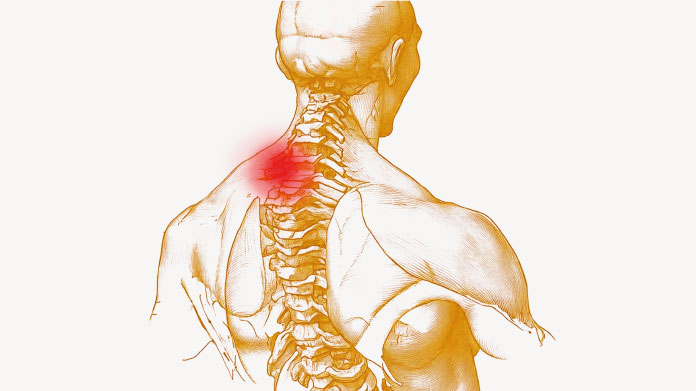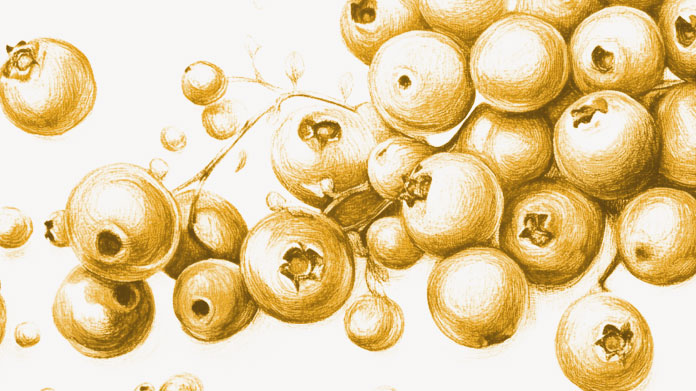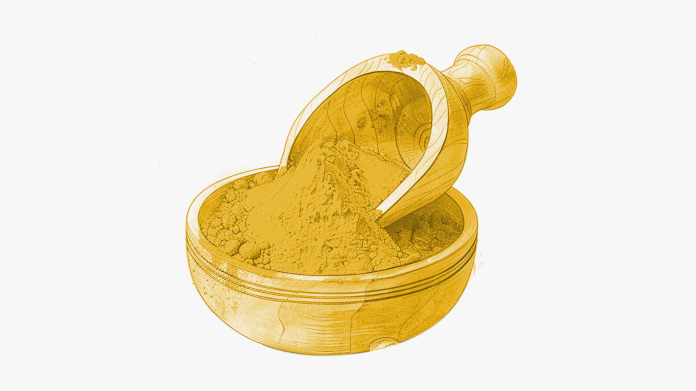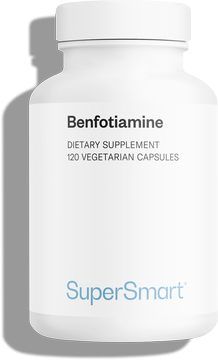5 plants for fighting chronic inflammation
Chronic inflammation is responsible for numerous diseases. But it’s not inevitable: read on for our tips on how to fight it naturally with the aid of plants!

What exactly is chronic inflammation?
When the body comes under attack (from infection, injury, stress …), it initiates the inflammatory process. But when inflammation drags on, our health can suffer, with potentially serious consequences. The good news is there are natural solutions that can help control this chronic inflammation.
Turmeric, the anti-inflammatory spice par excellence
This spice with its distinctive yellow colour is also an impressive natural remedy: it fights free radicals, lowers blood pressure … First described by Ayurveda, the traditional Indian system of medicine, its benefits have now been taken up by Western complementary therapies.
Its main active principle is curcumin, which is responsible for the above-mentioned benefits and for its powerful anti-inflammatory effects. Turmeric powder thus protects many key elements of the body against excessive inflammation: the arteries, intestines, pancreas, eyes …
Curcumin also acts against tissue inflammation in general, which can lead to certain forms of cancer (1). The spice has also been shown to have positive effects against chronic inflammation of the joints: a very common problem which is responsible for arthritis and rheumatoid arthritis. Consuming turmeric helps reduce swelling of the joints and associated paine, with no unwelcome side-effects at recommended doses (2).
In practice: turmeric, with its understated, inoffensive taste, can be sprinkled on everything! On prepared dishes, soups, salads … You can also maximise its effects by taking a dietary supplement that’s highly-concenterd in curcumin (Super Curcuma, Natural Curcuma...) These are often paired with black pepper which facilitates absorption.
Harpagophytum, a tuberous plant good for arthritis
For arthritis-sufferers, harpagophytum is also a tried and tested remedy. Commonly known as ‘cat’s claw’, this plant grows in dry environments such as deserts and steppes.
It’s rich in harpagoside and procumbide: two iridoid-glycosides (complex molecules composed of both a lipid and carbohydrate part) recognized for their anti-inflammatory effects. The benefits of these compounds rival those of drug treatments when it comes to reducing the pain of arthritis (3). Other studies have shown that harpagophytum reduces joint stiffness and improves mobility, especially in the case of lower back problems (4).
In practice: harpagophytum is available as a dietary supplement (Super Harpagophytum). A period of two to three months’ supplementation is recommended in order to benefit from this plant’s effects.
White willow, a natural pain-killer
White willow bark contains a high level of salicin, the basis of one of the most common pain-relief medications: aspirin. White willow is actually able to block the inflammatory process and its accompanying symptoms such as pain and swelling (5).
It also has the advantage of containing flavonoids and polyphenols which boost its anti-inflammatory activity (6). And few side-effects are associated with white willow, making it a powerful therapeutic ally in the fight against chronic inflammation. It effects have been demonstrated against migraine, arthritis, lower back pain …
In practice: supplements concentrated in salicin are available (one such product is Willow Bark Extract). Note : if you’re allergic to aspirin you should avoid any supplement that contains salicin.
Ginger, for inflammatory bowel disease
We use it grated in cooking, infused in tea … ginger’s taste qualities are well-known. But it’s also a powerful anti-inflammatory: indeed, it’s been used as such for many years in traditional Chinese medicine. The gingerols in ginger help block the production of prostaglandins (7), which are among the main compounds responsible for triggering inflammation in the body, particularly in the case of endometriosis and the pain associated with it.
Ginger has demonstrated powerful effects against period pains, while remaining very safe for the body (8). Studies have also shown its efficacy in relieving inflammation in chronic inflammatory bowel disease (Crohn’s disease, ulcerative colitis …) (9) This plant works at a deep level to fight chronic inflammatory processes.
In practice: fresh or dried, ginger can be added to everyday dishes. Even more effective is to take concentrated ginger in the form of a dietary supplement (Super Gingerols).
Cloves fight inflammation while protecting the stomach
Cloves, the well-known winter spice, is particularly rich in eugenol. This highly-aromatic compound acts at many levels against inflammation. Its effects have been shown against asthma and other inflammatory lung diseases, as well as in cancer models(10). Cloves’ comprehensive action makes it a spice that should be recommended for chronic inflammation in general.
In practice: cloves are, of course, a cooking ingredient, but they can also be used as an essential oil. Note: eugenol is an allergenic compound and essential oils should always be used with caution. Be sure to seek advice from your pharmacist. You can also take supplements containing eugenol (such as PADMA BASIC).
Chronic inflammation has significant adverse effects on the body. Phytotherapy can help maintain good health, as can good lifestyle habits such as a balanced diet and regular exercise. More than enough to fight inflammation naturally and effectively!
References
- Jurenka JS. Anti-inflammatory properties of curcumin, a major constituent of Curcuma longa: a review of preclinical and clinical research. Altern Med Rev. 2009 Jun;14(2):141-53.
- Javadi M, Khadem Haghighian H, Goodarzy S, Abbasi M, Nassiri-Asl M. Effect of curcumin nanomicelle on the clinical symptoms of patients with rheumatoid arthritis: A randomized, double-blind, controlled trial. Int J Rheum Dis. 2019 Oct;22(10):1857-1862.
- Chantre P, Cappelaere A, Leblan D, Guedon D, Vandermander J, Fournie B. Efficacy and tolerance of Harpagophytum procumbens versus diacerhein in treatment of osteoarthritis. Phytomedicine. 2000 Jun;7(3):177-83.
- Grant, L., McBean, D.E., Fyfe, L. and Warnock, A.M. (2007), A review of the biological and potential therapeutic actions of Harpagophytum procumbens. Phytother. Res., 21: 199-209.
- Beer AM, Wegener T. Willow bark extract (Salicis cortex) for gonarthrosis and coxarthrosis--results of a cohort study with a control group. Phytomedicine. 2008 Nov;15(11):907-13.
- Nahrstedt A, Schmidt M, Jäggi R, Metz J, Khayyal MT. Willow bark extract: the contribution of polyphenols to the overall effect. Wien Med Wochenschr. 2007;157(13-14):348-51.
- Grzanna R, Lindmark L, Frondoza CG. Ginger--an herbal medicinal product with broad anti-inflammatory actions. J Med Food. 2005 Summer;8(2):125-32.
- Rahnama P, Montazeri A, Huseini HF, Kianbakht S, Naseri M. Effect of Zingiber officinale R. rhizomes (ginger) on pain relief in primary dysmenorrhea: a placebo randomized trial. BMC Complement Altern Med. 2012;12:92. Published 2012 Jul 10. doi:10.1186/1472-6882-12-92.
- Zhang M, Viennois E, Prasad M, Zhang Y, Wang L, Zhang Z, Han MK, Xiao B, Xu C, Srinivasan S, Merlin D. Edible ginger-derived nanoparticles: A novel therapeutic approach for the prevention and treatment of inflammatory bowel disease and colitis-associated cancer. Biomaterials. 2016 Sep;101:321-40.
- Barboza JN, da Silva Maia Bezerra Filho C, Silva RO, Medeiros JVR, de Sousa DP. An Overview on the Anti-inflammatory Potential and Antioxidant Profile of Eugenol. Oxid Med Cell Longev. 2018;2018:3957262. Published 2018 Oct 22. doi:10.1155/2018/3957262.
Keywords
1 Days
Ordering was easy and the product was…
Ordering was easy and the product was delivered with no problems. Appreciated that I was notified when it would arrive. Thanks!
MascarC
6 Days
Great customer service - responsive …
I ordered from them and my item was unavailable for sometime. I was super happy when they reactivated my order and shipped my item which arrived very quickly. Great customer service.
Ruth Rueter
7 Days
Super fast shipping
Super fast shipping
Donald Borling
11 Days
Reputable companysearch and the number of…
The research and the number of selection of products.
NAKHJAVAN Shervin
24 Days
The Anti Aromatase is a great product
The Anti Aromatase is a great product. You just need to have constant inventory. Recently this product has been out of stock.
GEORGE Verne
25 Days
Great help on chat
Great help on chat. Knowledgeable and friendly.
Jason Argos
29 Days
Customer service was fast and friendly.
Customer service helped to stop the transaction process of the subscription. I appreciated that.
Greenie
29 Days
I order here due to the high quality of…
I order here due to the high quality of the products and the quick delivery of items - thank you
Barbara J
30 Days
SuperSmart's Eye Pressure supplements: highly recommended!
I purchase SuperSmart's Eye Pressure supplements regularly for over 5 years, and gotta say they are truly a wonderful product for my Glaucoma. Highly recommended if you have eye pain from your Glaucoma.
D. Martinez
35 Days
Quick service
Quick service
MONELL
36 Days
Speedy service.
Speedy service.
ROSENTHAL Marvin
39 Days
Clear website- Efficient
Clear website. Excellent search engine and fast delivery!
Mohamad Hussein
42 Days
They have great products.
They have great products.
Vickie
42 Days
Great Shipping Time!
You Have A Great Shipping Time! Praise The Lord!
DMHoge
44 Days
Doctor Recommended!
Good pricing, very good availability, doctor recommended (couldn't find what I needed anywhere else), and it took only a week to arrive (which I can't complain about).
Al





